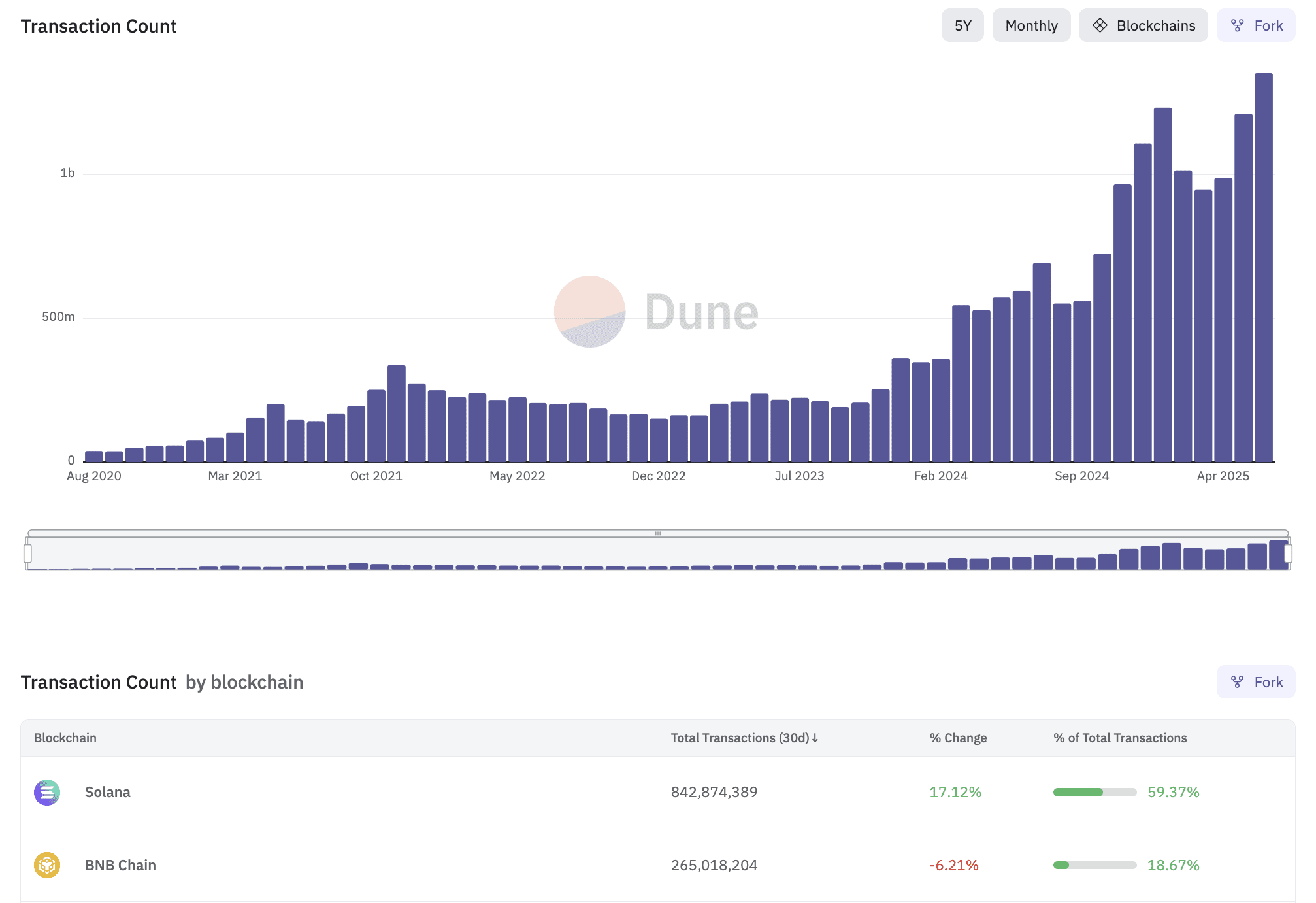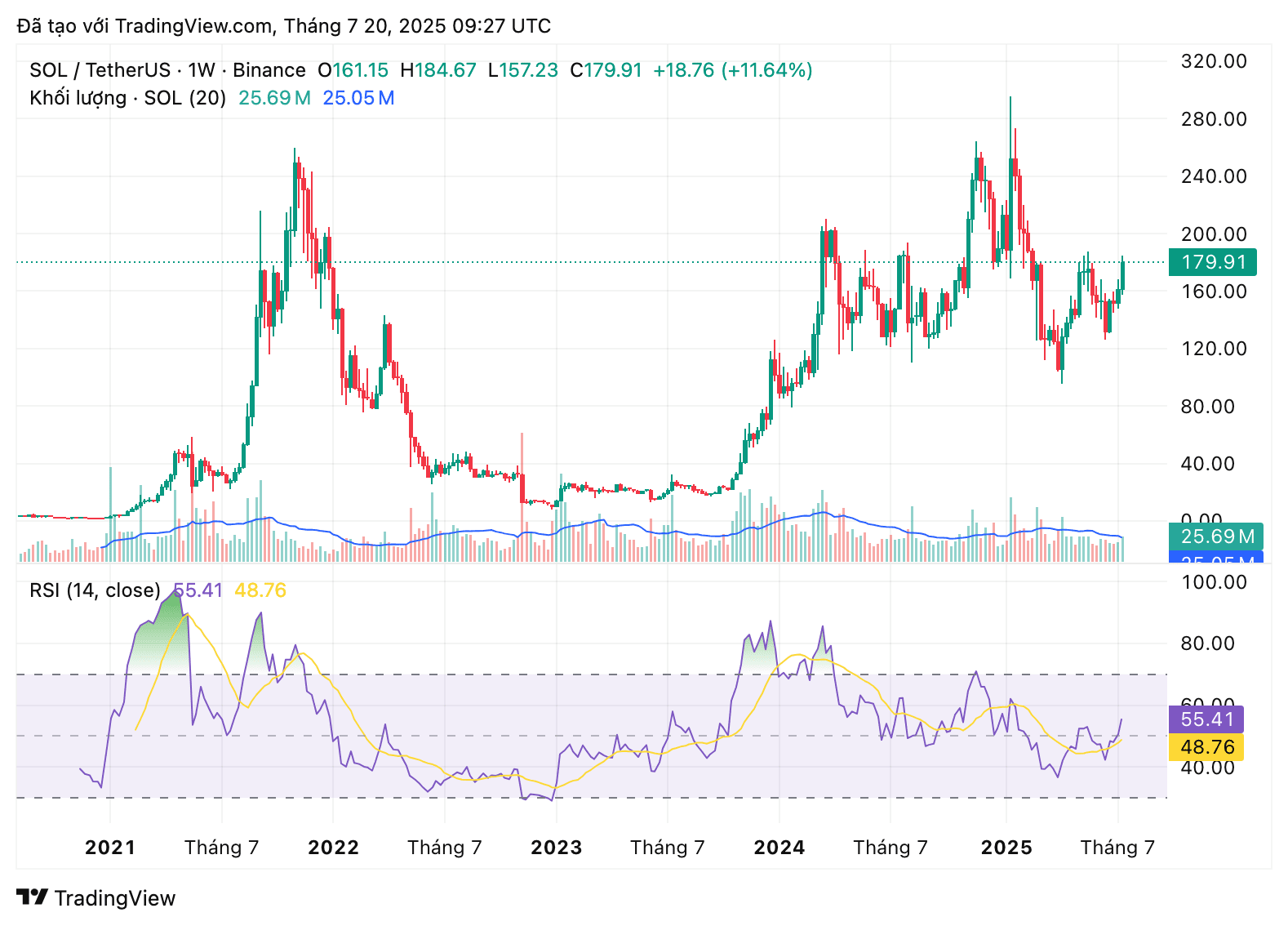The blockchain market has just recorded a historic milestone: over 340 million transactions completed in just seven days – the highest ever recorded. This boom is not only an impressive statistical figure, but also a signal of the increasing interaction level of users and a new wave of optimism returning to the digital asset industry.
Solana and BNB Chain: The race on the blockchain runway
According to data from the analytics platform Dune, Solana is dominating the transaction front with nearly 60% market share, driven by the memecoin frenzy and platforms like Pump.fun and LetsBonk. This network has also just completed its ICO, attracting significant cash flow and attention from the community.
Following is BNB Chain with over 18%, not only maintaining its position due to a rich DApp ecosystem but also undergoing a series of upgrades to break through in the near future.

Tron, ranking third with nearly 5% of transactions, shows significant stability, especially as this network surpasses Ethereum in the number of global USDT transactions, more than 5 times – a testament to its utility and strong participation from the actual user community.
Data speaks
In addition to transaction volume, both Solana, BNB Chain, and Tron are among the top 10 in daily active users, according to data from TokenTerminal – a crucial factor for assessing the sustainability and vitality of a blockchain.

Unlike previous short-term speculative growth spurts, the current wave is driven by real demand, with decentralized transactions (DEX), staking, and stablecoins increasingly becoming an essential part of the digital financial infrastructure.
Solana accelerates with ETF and institutional momentum
Not only active technically, Solana is also making its mark in traditional finance with the launch of the first Solana staking ETF in the United States, and is narrowing the gap to a spot ETF – with the S-1 filing deadline at the end of July as required by the SEC.
This is a positive signal for the increasing legitimacy of Solana – one of the blockchains highly regarded for its speed and scalability.

BNB Chain – The “machine” ready to take off
Not to be outdone, BNB Chain is preparing for a significant leap. The network is expected to raise the gas block limit to 1G – ten times the current level, paving the way for the ability to handle up to 5,000 DEX transactions per second to meet the increasing demand by the end of 2025.
Ambitions do not stop there. According to the recently announced upgrade plan, BNB Chain aims to match the speed and scale of Nasdaq, processing up to 20,000 transactions/second, focusing on complex operations such as swaps, staking, and on-chain profit strategies.
To realize this vision, the network will deploy a multi-threaded client written in Rust (based on Ethereum's Reth), optimizing node synchronization, reducing latency, and enhancing performance. Combined with improvements like Super Instructions and upgrades to the StateDB system, BNB Chain is laying the groundwork for a high-precision operating ecosystem, superior speed, and flexible scalability.
Celebrating its 8th birthday, BNB – which launched at just 0.15 USD – is now trading at around 748 USD, recording a growth of more than 10,000 times since its launch in 2017.
BNB not only serves as the native asset for the Binance ecosystem but also attracts financial institutions. Many companies are currently including BNB in their corporate asset portfolios, with at least one business aiming to hold up to 1 billion USD in BNB in its treasury.
The automatic BNB burning program, a deflationary mechanism based on market price and network activity, has helped reduce the total supply to 139.28 million BNB, contributing to the scarcity and long-term value appreciation of this asset.
Record figures for transactions and users, technological scaling, and the growing involvement of traditional financial institutions are laying the groundwork for a new growth era in the blockchain industry. No longer a race of unrealistic dreams, the market is now transforming into a true financial infrastructure, where performance, scalability, and reliability are prioritized.
2025 could be a pivotal year, when blockchain is not just a game for venture capitalists, but becomes a pillar of the global digital economy.